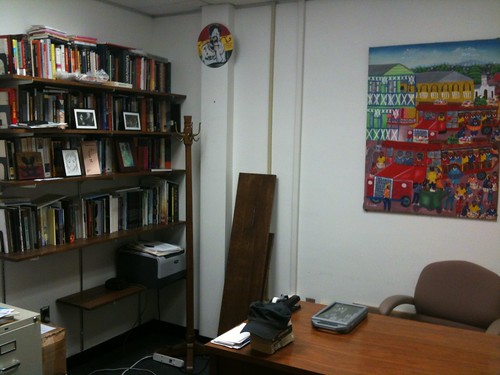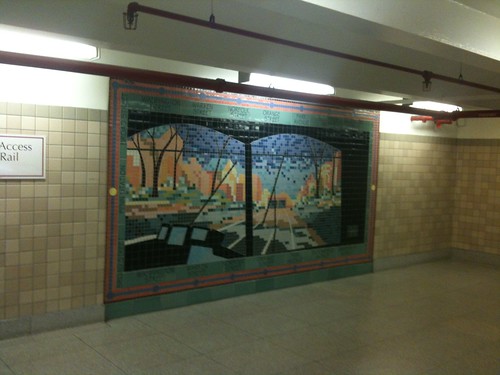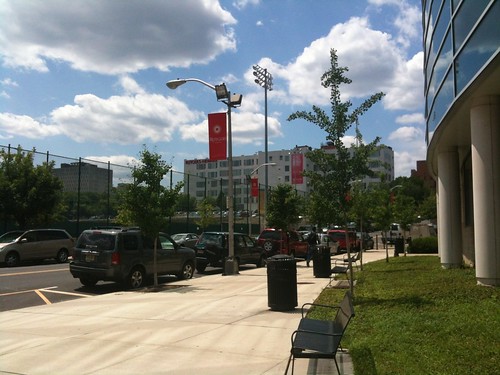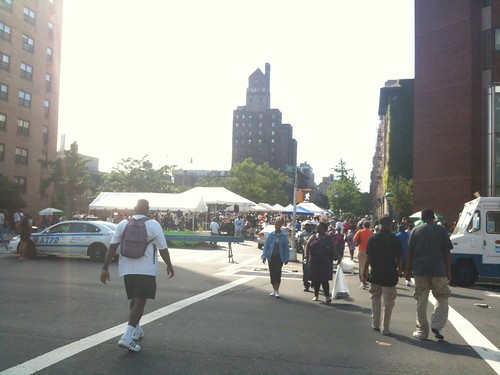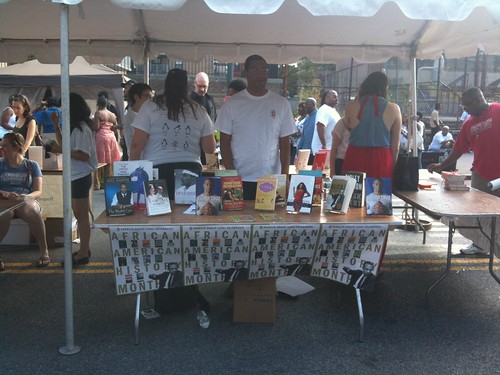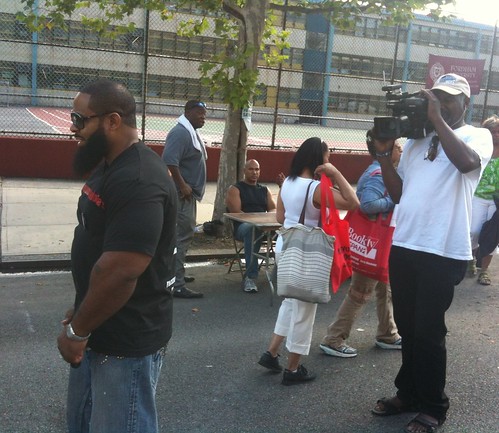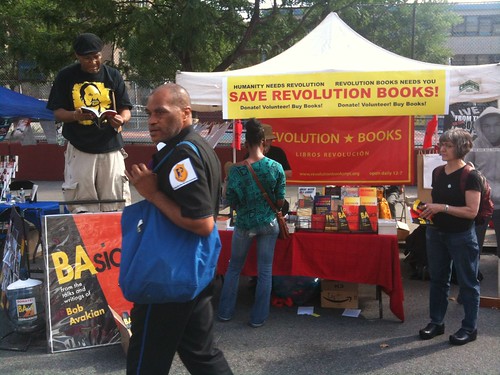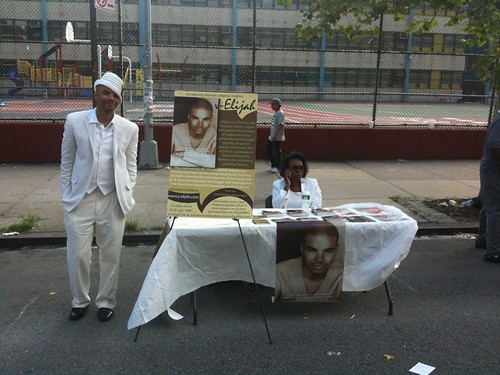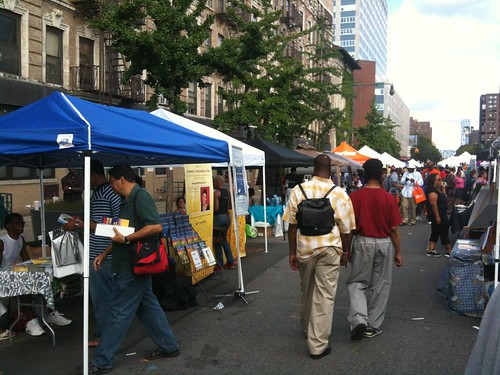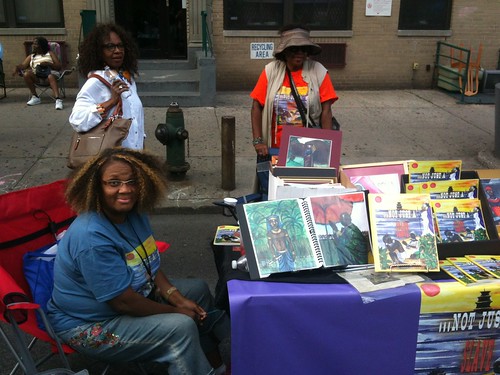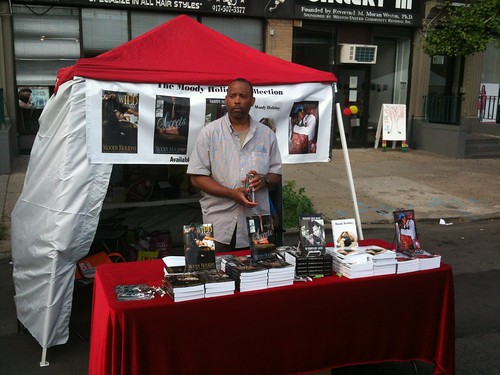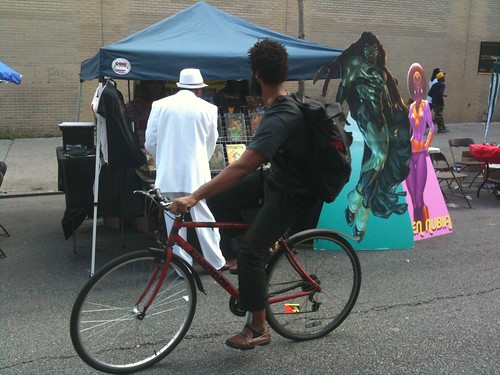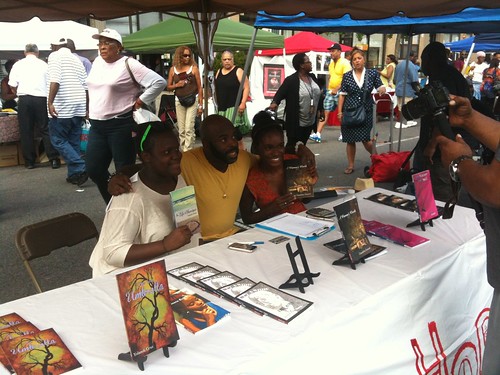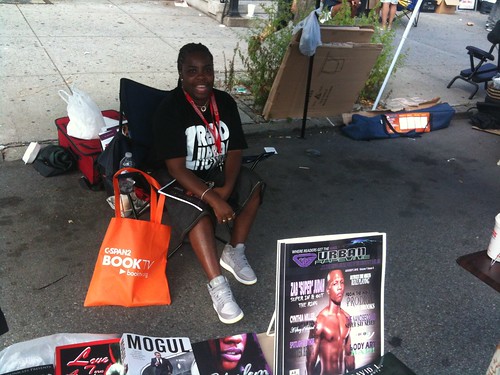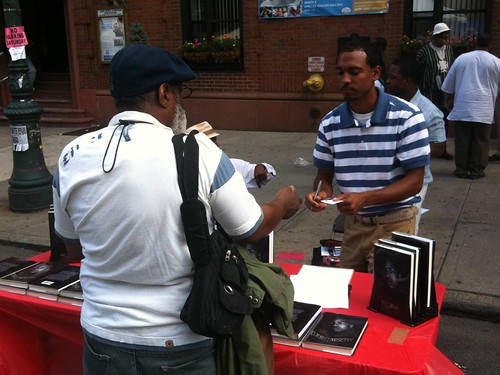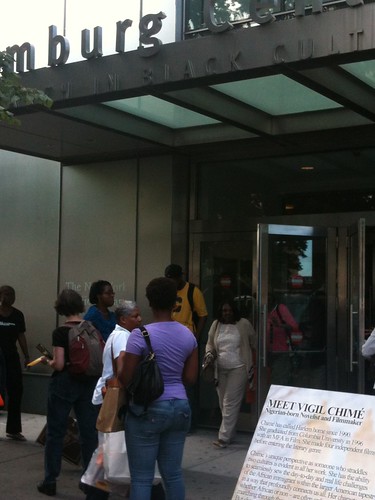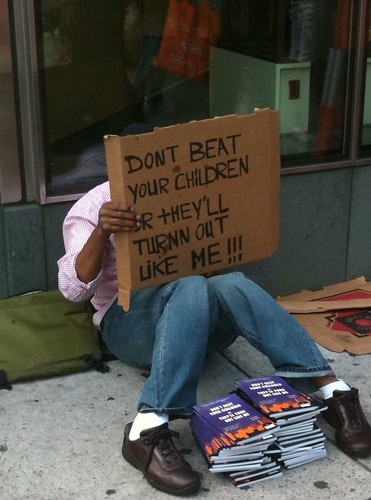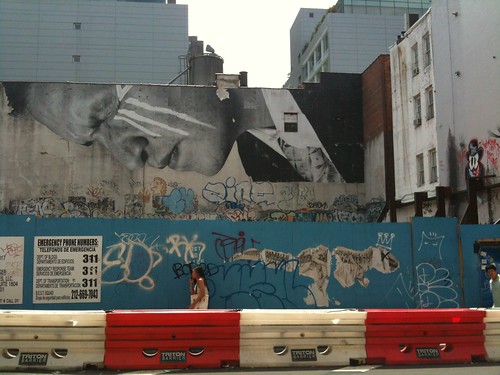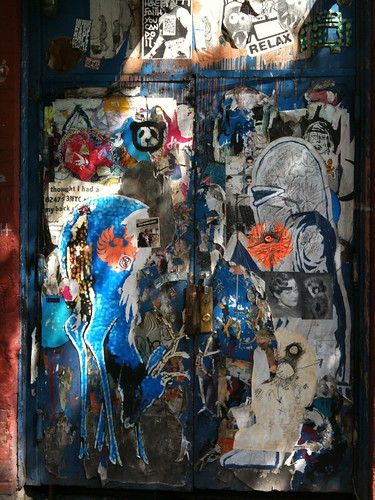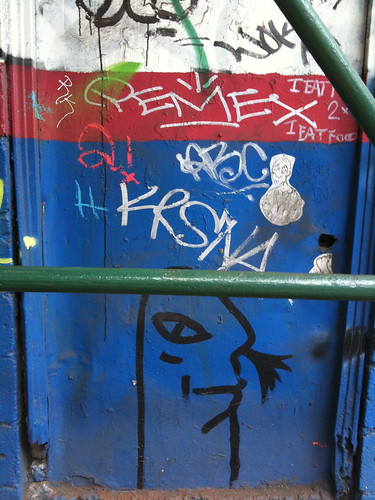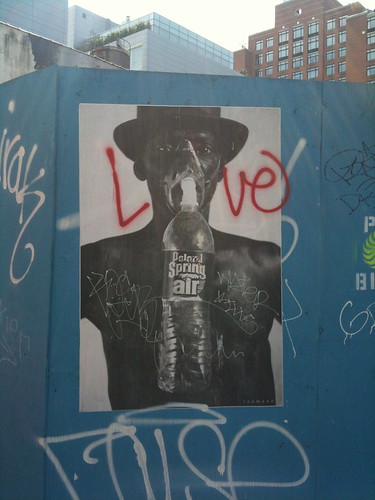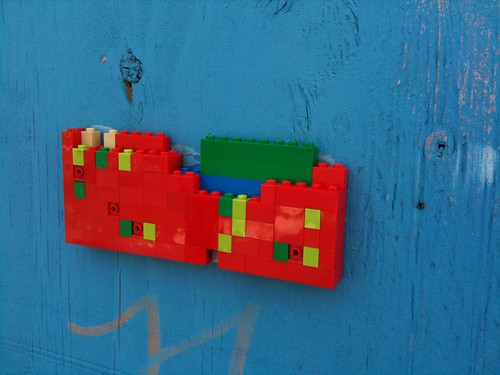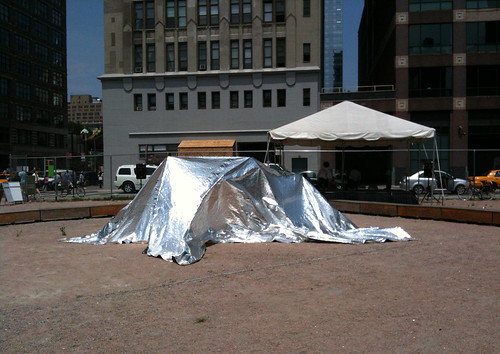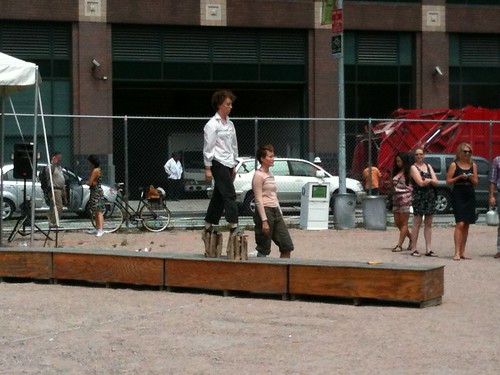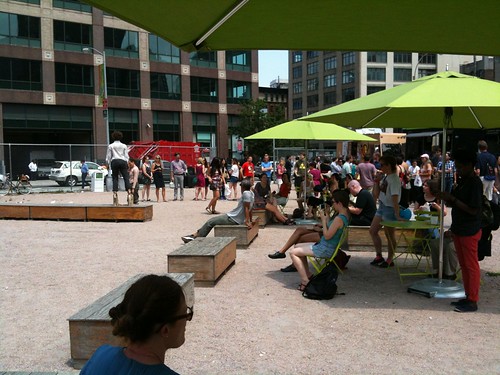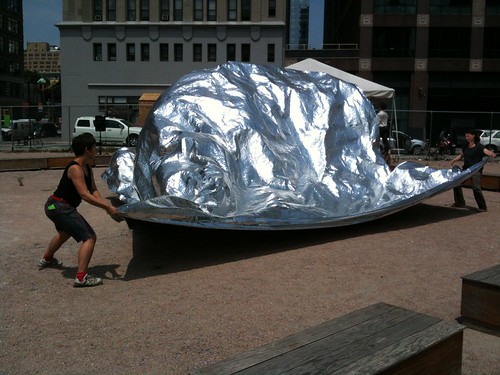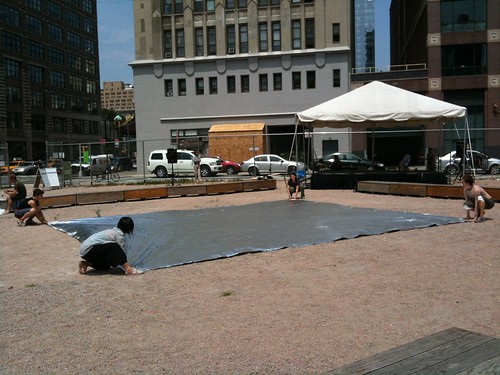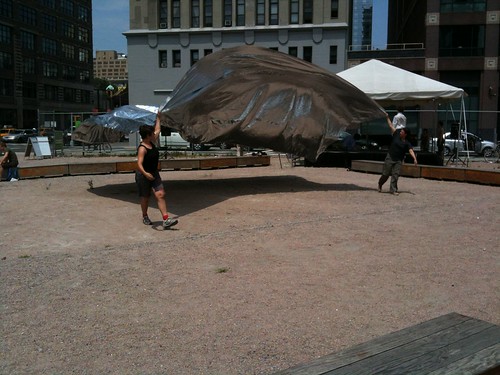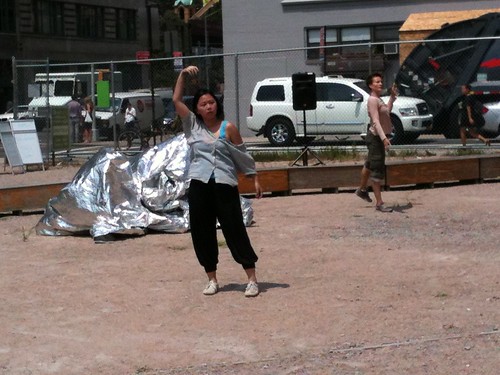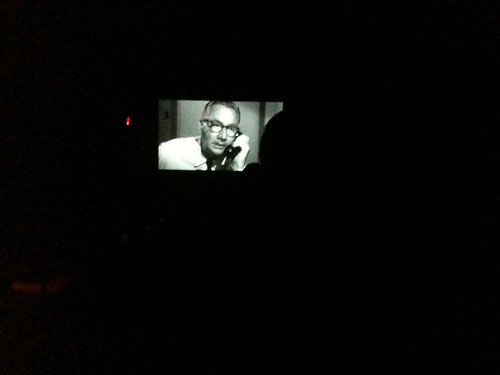 |
| A scene from the film (my surreptitious photo) |
Knowing that tomorrow would be the final day to see Christian Marclay's acclaimed film The Clock, which would also probably ensure a line all the way to Midtown, I hightailed it up to Lincoln Center to catch a snippet--that was my goal, to see only a small portion to savor the experience--and find out what all the hullabaloo was about. Zadie Smith wrote what I think is the definitive meditation of the ones I've read on the film, entitled "Killing Orson Welles at Midnight," which she published in the New York Review of Books back in April of this year, so I won't attempt to match her perceptiveness or depth of reading. Instead, I'll point out that this is as strange, seductive, experimental, and methodical a film as I've ever seen, and it compels your viewing even as it lulls you. I found myself attempting two things constantly: trying to guess when the clock would appear--for Marclay ensures, I believe, that it either appears or is mentioned every minute of the 24-hour clock--and trying to figure out from which films came the swatches of cinema he has ingeniously stitched together. Yet as I was actively doing this, I also found myself become transfixed by the stream of imagery and sound, the whole cloth of the film, such that although I'd set for myself a fixed time of no more than 30 minutes--I wanted to allow others to catch the film and to gauge my experience of only a tiny bit of it--I kept pushing back my moment of departure. My eyes remained agape; my indifference to the dutiful ushers who were, like mechanical soldiers, guiding people in and out of every available seat (the Lawrence Rubinstein Atrium at Lincoln Center cinema space holds only 96 or so), never slid into annoyance; my wonder and awe at what Marclay had pulled off steadily rose, though I could not bring myself to.
 |
| The serpentine line in front of the cinema space |
When I realized, via the clock on screen, which matched up exactly with the real time outside the darkened narrow room, that I'd gone over, I had to force myself to get up and head out. A smile parted my lips. I'd waited in line for about 2 1/2 hours, and it was if I had not even waited 10 seconds; my entire sense of time, so forcefully grounded by Marclay's artistry had, ironically, floated off into nothingness. The balmy air, more autumnal than August need promise, was like an added gift. If there weren't likely to be a long line and I didn't have to start preparing for classes and so on, I'd go back tomorrow, and sit for a slightly longer time. I completely grasp how people have managed to pass an entire morning, or evening, or day in front of Marclay's film. It beguiles that completely. At least it did to me. I wonder what it would have been like to see in the Paula Cooper Gallery, as Smith did, last winter. To go at any time of the day or night and just watch. There is tomorrow, of course, for those nearby. It is worth it.
One of the docents, who was helpfully keeping people from jumping in the line and, as calmly as possible, telling people that they might have to wait for 4 hours or more like everyone else, did say, I think I heard correctly, that a print of the film will remain in New York, and may show again at some point in the fall. If it does, especially for the 24-hour period, I intend to be there to see it again. It ought to be released for public and private viewing parties too. It's a perfect way to while away an hour, or several, and give the mind a workout even as it is simultaneously rocked to something akin to, but not exactly, sleep.
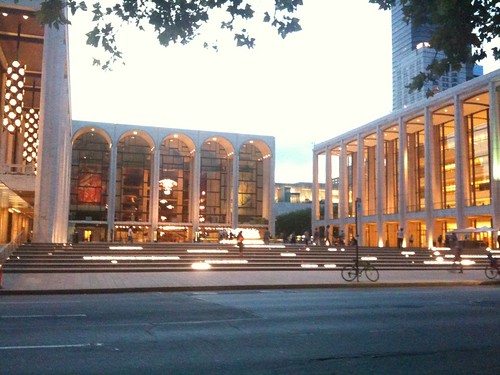 |
| Ever grand Lincoln Center, on a late-summer night |
From Zadie Smith's essay:
The things you notice on a second visit are quite small but feel necessary for orientation, like drawing an x and y axis before attempting to plot a great mass of information on a graph. In my notebook I tried to state the obvious, to get it clear in my own mind. The Clock is a twenty-four-hour movie that tells the time. This is achieved by editing together clips of movies in which clocks appear. But The Clock is so monumental in intention and design that even the simplest things you can say about it need qualification. There isn’t, for example, a clock visible in every scene. Sometimes people will only mention the time, or even just speak of time as a general concept. Mary Poppins does less than that; she glances at her wristwatch, the face of which we cannot see, then opens her umbrella and flies, to be replaced, a moment later, by a man, also flying with an umbrella, who soon floats past a clock tower, thus revealing the time. There are many moments like this, and when you first notice them their synchronicity and beauty are a little unnerving. They reveal a creative constraint even larger and more demanding than the one you had assumed. If The Clock cares to match a flying umbrella with a flying umbrella, it must have aesthetic currents passing beneath its main flow, moving in a variety of directions, not simply clockwise.




